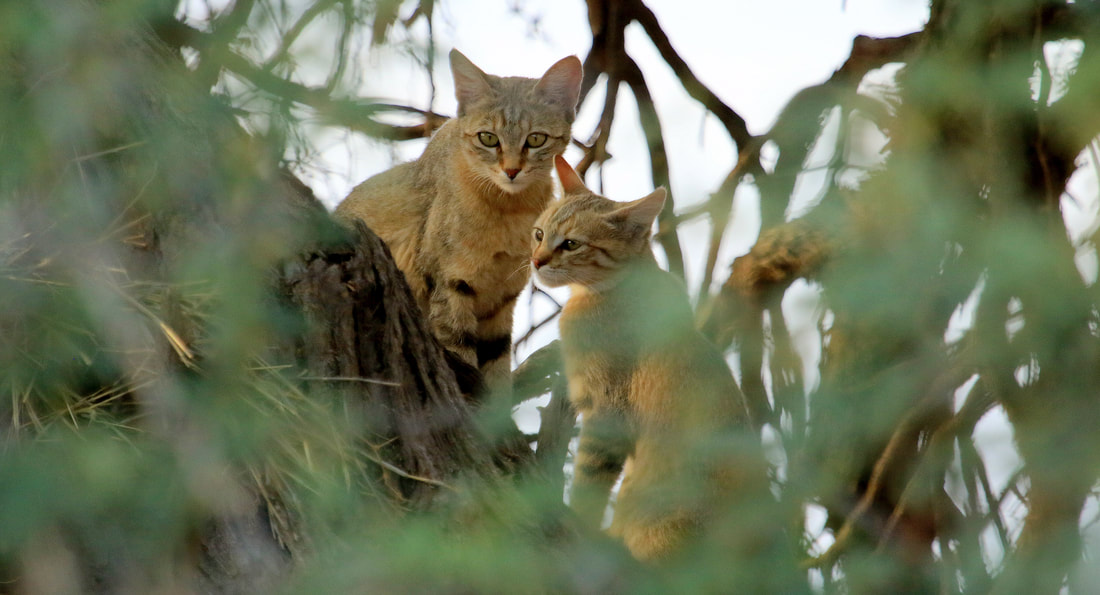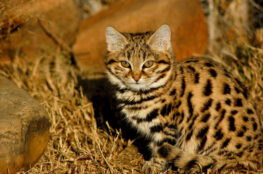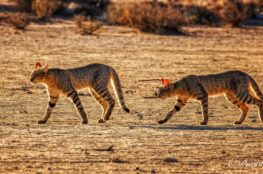African wildcats (Felis lybica), are small and slender felines who thrive across diverse habitats from the sun-drenched savannas of Africa to the rugged terrains of parts of Asia.
With its distinctive tawny coat adorned with subtle stripes and notable tufted ears, this elusive predator exemplifies the artistry of evolution. As a master of adaptation, the African wildcat prowls through grasslands and scrublands, showcasing remarkable agility as it hunts under the cover of night, targeting an array of small mammals, birds, and insects.
Notably, this fascinating creature of Felidae holds a pivotal role in history, as genetic research reveals it as the ancestor of the modern house cat—domestication began approximately 9,000 years ago in the Near East—when wildcats started to thrive in close proximity to burgeoning human agricultural practices, carving a unique partnership that would influence both species for millennia.
Here are more interesting facts about African wildcats:
1. Adaptability
African wildcats can thrive in various environments, from deserts to rocky hills, demonstrating remarkable adaptability to different habitats.
2. Communication
African wildcats communicate using a range of vocalizations, as well as scent marking and body language to establish territory and attract mates.
3. Small Size
Typically, they weigh between 5 to 16 pounds and measure about 18 to 30 inches in length, making them smaller than domestic cats in some cases.
4. Hunting Skills
They are exceptional hunters, using stealth and speed to catch their prey, often employing a pounce technique similar to that of other felines.
5. Social Structure
Unlike some larger cats, African wildcats are largely solitary, coming together only for mating, which helps reduce competition for resources.
6. Conservation Status of African Wildcats
While African wildcats are not currently endangered, habitat loss and interbreeding with domestic cats pose threats to their populations and genetic integrity. Luckily there are conservation organisations looking after this, such as the African Wildcat Project, funded by Alley Cat Rescue.
7. Distinctive Markings
Each individual wildcat has a unique coat pattern and coloration, which helps them blend into their surroundings and avoid predators. These characteristics highlight the adaptability and ecological importance of the African wildcat in its natural habitat.



